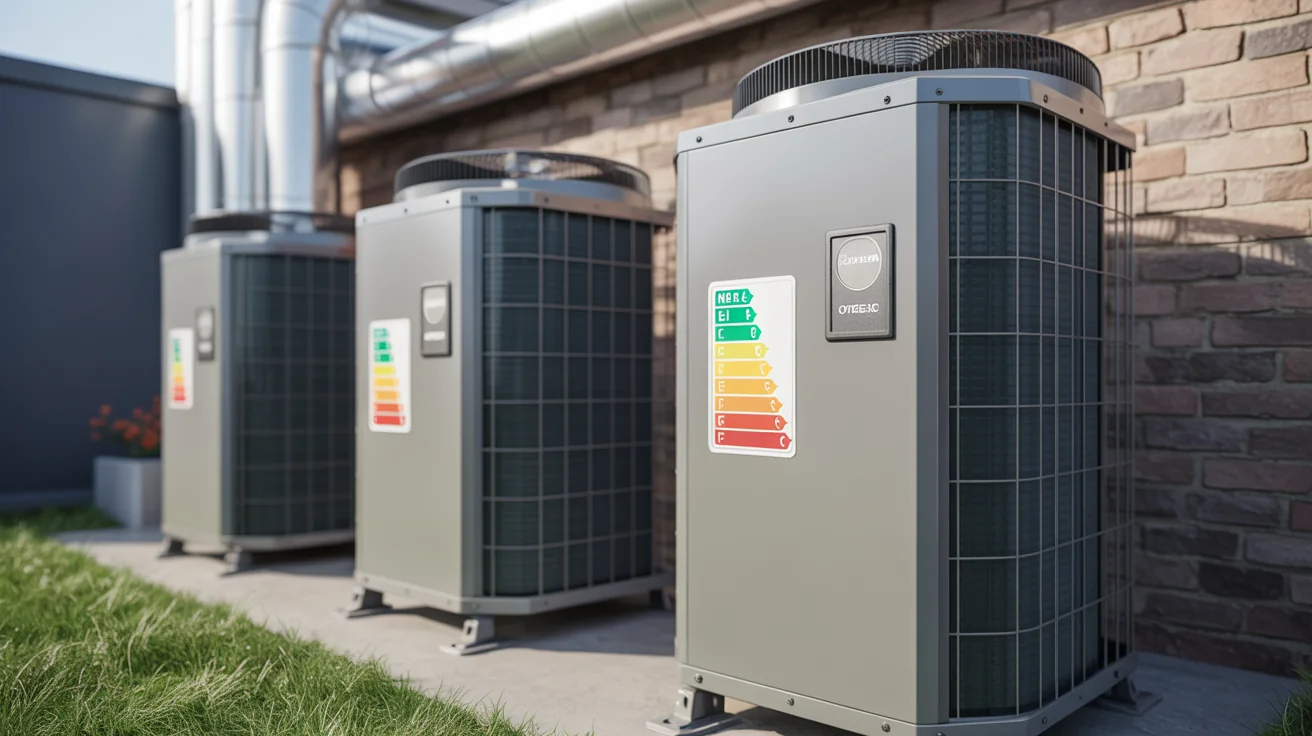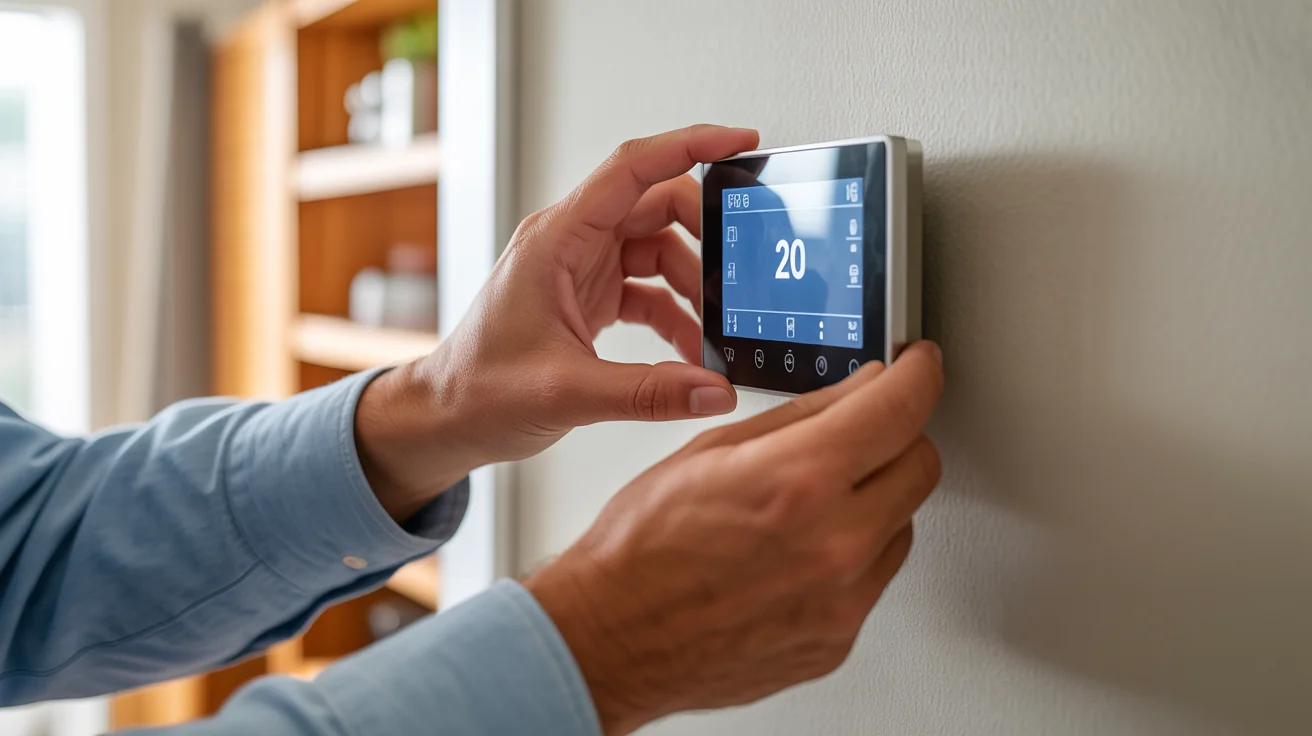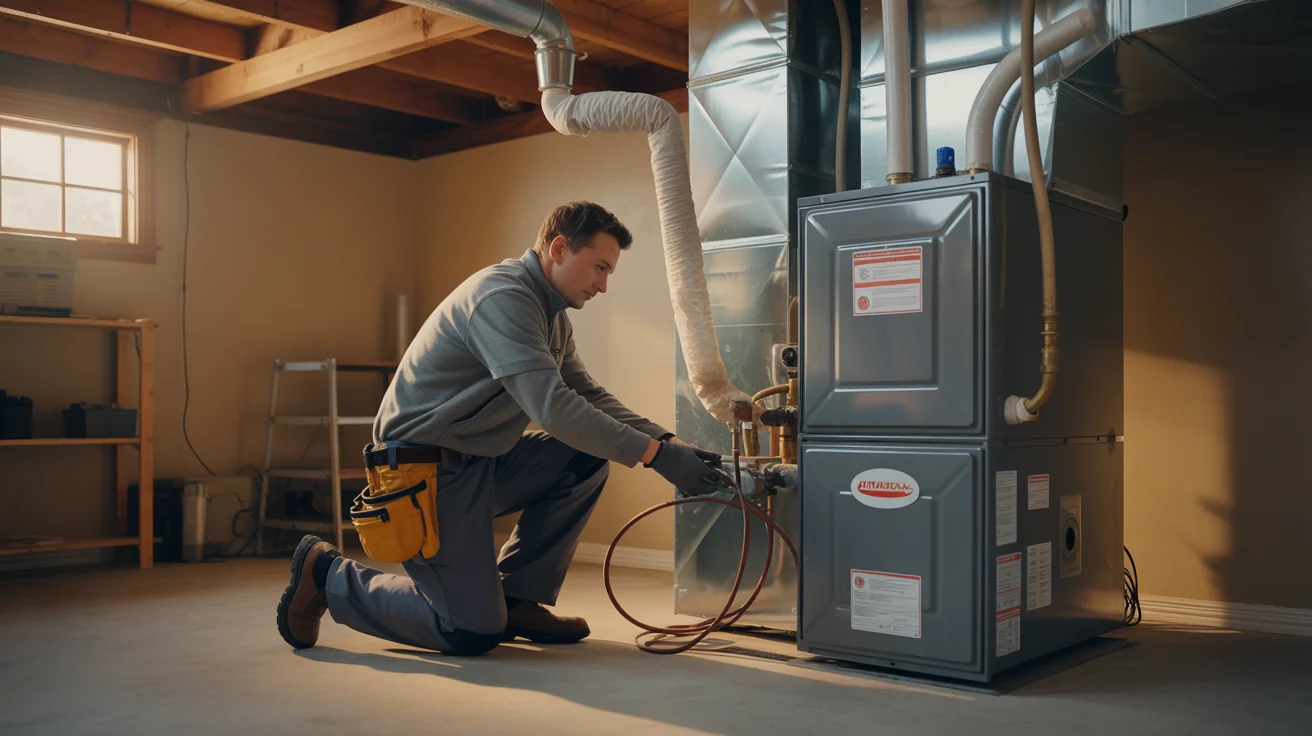Radiant Heating Systems vs Forced Air Comparison (2025): Complete Guide for North Texas Climate
Comprehensive comparison of radiant heating vs forced air systems for North Texas. Energy efficiency, comfort, costs, and installation considerations.

Radiant vs. Forced Air Heating: What Luxury Builders Know
After 15 years installing both radiant and forced air systems across North Texas, I can tell you the truth luxury builders know but rarely share: radiant heating delivers comfort that forced air simply can’t match, but it comes with upfront costs that make most homeowners stick with conventional systems.
I’ve installed radiant systems in custom homes where families swear they’ll never go back to forced air. I’ve also diagnosed radiant systems that became expensive nightmares because homeowners didn’t understand the maintenance requirements. Let me share what actually works in our North Texas climate.
North Texas creates a unique heating challenge that confuses even experienced contractors. Our heating season runs maybe 90 days annually, but when we need heat, we really need it. Ice storms can drop temperatures 40 degrees overnight.
Most homes here need both heating and cooling systems regardless, which changes the economics completely. Unlike Minnesota where heating dominates utility costs, we’re optimizing for both seasons. That $30,000 radiant system might save you $200 annually on heating bills that only matter three months per year.
Construction type matters more in Texas than anywhere else I’ve worked. Slab homes make radiant installation straightforward during construction but expensive to retrofit. Pier-and-beam homes create access challenges that inflate installation costs dramatically.
Here’s the truth about heating system decisions in North Texas: comfort often matters more than efficiency because our heating costs are relatively small compared to cooling. The question isn’t which system saves the most money - it’s which system delivers the comfort experience you want.
Understanding Radiant Heating Technology
How Radiant Heating Works
Radiant Heat Transfer Principle: Radiant systems heat objects and surfaces directly through infrared radiation, similar to how the sun warms your skin. This creates: Even temperature distribution eliminates hot/cold spots throughout rooms. Quiet operation produces no noise from fans or air movement. Dust-free heating prevents air circulation from spreading allergens. Thermal comfort means radiant heat feels warmer at lower air temperatures.
System Types:
Hydronic (Water-Based) Systems: Heat source uses boiler or water heater to circulate warm water. Distribution involves tubing installed in floors, walls, or ceilings. Temperature operates at low levels (85-120°F water). Efficiency achieves 85-95% seasonal heating efficiency potential.
Electric Radiant Systems: Heat source uses electric resistance cables or mats. Applications include bathroom floors, small areas, and supplemental heating. Temperature provides direct electrical heating at point of use. Efficiency delivers 100% electrical efficiency, but with higher operating costs.
Forced Air Heating Systems
Traditional Forced Air Operation
Heat Distribution Method: Forced air systems heat air centrally and distribute it through ductwork: Heat generation: furnace or heat pump warms air. Air movement: fans circulate heated air throughout home. Temperature control: thermostatic control with air temperature sensing. Ductwork needs: extensive duct system for air distribution.
System Efficiency Factors: Equipment efficiency: 80-98% afue for modern furnaces. Distribution losses: 15-30% heat loss through ductwork. Air leakage: duct leakage reduces delivered heating capacity. Zoning limitations: single thermostat for entire home typical.
Comprehensive Performance Comparison
Energy Efficiency Analysis
Related: Energy Efficiency
Radiant System Efficiency:
Hydronic Radiant Advantages: No duct losses: heat delivered directly where needed. Lower operating temperatures: high-efficiency boiler operation. Thermal mass benefits: stored heat continues warming after system cycles off. Zone control: individual room temperature control reduces energy waste.
Measured Performance: Delivered efficiency: 85-95% of generated heat reaches living spaces. Comfort efficiency: feels comfortable 3-5°f lower than forced air. Energy savings: 20-40% lower heating costs vs. forced air.
Forced Air System Efficiency:
Modern Forced Air Performance: Equipment efficiency: 90-98% afue for high-efficiency furnaces. Distribution efficiency: 70-85% after duct losses. Overall efficiency: 60-80% delivered heating efficiency typical.
Efficiency Factors: Duct location: attic installation reduces efficiency in texas. Duct sealing: professional sealing improves efficiency 15-25%. Equipment sizing: proper sizing essential for optimal efficiency.
Comfort Comparison
Radiant Heating Comfort: Temperature uniformity: ±1°f temperature variation throughout rooms. No drafts: elimination of air movement and cold drafts. Silent operation: completely quiet heating with no mechanical noise. Air quality: no dust circulation or air filtration concerns. Thermal sensation: radiant heat feels warmer than air temperature.
Forced Air Comfort: Temperature variations: 3-5°f swings typical with thermostat cycling. Air movement: can create drafts and uneven heating patterns. Noise levels: fan operation creates background noise. Air quality: requires filtration but can improve with proper maintenance. Quick response: faster temperature changes when needed.
Installation and Cost Analysis
Radiant System Costs:
Hydronic Floor Heating: $12-25 per square foot installed New construction: $15,000-35,000 for typical 2,500 sq ft home. Retrofit installation: $18,000-45,000 depending on access. Boiler/controls: $8,000-15,000 for heating equipment. Installation complexity: 5-10 days for complete installation.
Electric Radiant: $8-15 per square foot installed Bathroom applications: $1,500-4,000 typical project. Supplemental heating: $3,000-8,000 for multiple rooms. Operating costs: 2-3x higher than hydronic systems. Installation time: 1-3 days for most projects.
Forced Air System Costs:
Complete System: $8,000-18,000 installed High-efficiency furnace: $4,000-8,000 equipment. Ductwork installation: $3,000-6,000 for new construction. Retrofit ductwork: $5,000-12,000 for existing homes. Installation time: 2-5 days typical.
North Texas Climate Considerations
Heating Season Analysis
Annual Heating Requirements: Heating degree days: 2,407 annually (mild compared to northern climates). Heating months: december through february primary, with shoulder seasons. Peak heating loads: 15-25 btu/sq ft for well-insulated homes. Operating hours: 1,200-2,000 hours annually vs. 4,000+ cooling hours.
Climate-Specific Factors:
Mild Winter Benefits for Radiant: Low-temperature operation: radiant systems excel in moderate climates. Thermal mass advantage: concrete slabs store and release heat effectively. Reduced cycling: continuous low-level operation more efficient than on/off cycling. Comfort at lower temps: radiant heat feels comfortable at 65-68°f vs. 70-72°f for forced air.
Cooling System Integration: Since North Texas requires significant cooling, consider total HVAC approach: Radiant heating + separate cooling: ductless mini-splits or ceiling-mounted air handlers. Hybrid systems: radiant heating with ducted cooling using existing ductwork. Dual-purpose ductwork: use radiant for heating, forced air for cooling only.
Building Type Suitability
Ideal Applications for Radiant: Concrete slab foundations: optimal thermal mass and installation access. New construction: easier and more cost-effective installation. High-end custom homes: luxury comfort and quiet operation valued. Homes with allergies: eliminates air circulation and dust distribution. Open floor plans: even heating throughout large spaces.
Better Applications for Forced Air: Pier and beam foundations: easier ductwork installation under house. Existing homes with ductwork: utilize existing distribution system. Budget-conscious projects: lower upfront investment required. Quick heating needs: faster response to temperature changes. Integrated cooling: single system handles both heating and cooling.
Advanced System Configurations
Hybrid Heating Systems
Radiant + Heat Pump Combination: Primary heating: radiant floor heating for base load. Backup heating: heat pump for rapid temperature recovery. Optimal efficiency: each system operates in most efficient range. Climate adaptation: heat pump handles shoulder seasons effectively.
Zoned Radiant Systems: Individual room control: thermostats in each major living area. Occupancy-based heating: heat only used spaces. Energy optimization: reduce heating in unoccupied areas. Comfort customization: different temperature preferences accommodated.
Smart Control Integration
Advanced Radiant Controls: Outdoor reset: automatically adjusts water temperature based on outdoor conditions. Learning thermostats: adapt to occupancy patterns and preferences. Smart home integration: voice control and smartphone apps. Energy monitoring: track energy usage and improve performance.
Forced Air Smart Features: Variable speed operation: modulating fans and heating capacity. Zoned distribution: dampers control airflow to different areas. Air quality integration: coordinate filtration and ventilation. Maintenance monitoring: track filter life and service needs.
Maintenance and Longevity
Radiant System Maintenance
Routine Maintenance Requirements: Annual boiler service: combustion analysis and safety inspection. System pressure monitoring: check and maintain proper water pressure. Control calibration: verify thermostat and zone valve operation. Fluid treatment: water quality management prevents corrosion.
Component Lifespan: Radiant tubing: 50+ years with proper installation and water quality. Boiler systems: 15-25 years with regular maintenance. Pumps and controls: 10-15 years typical replacement interval. Overall system: 25-50 years with proper maintenance.
Forced Air Maintenance
Regular Service Requirements: Filter replacement: monthly during heating season. Annual tune-up: combustion analysis, safety checks, cleaning. Ductwork inspection: periodic leak testing and sealing. Component maintenance: blower motor, heat exchanger, controls.
Equipment Lifespan: Furnace systems: 15-20 years with proper maintenance. Ductwork: 20-30 years depending on installation quality. Air handlers: 12-18 years typical replacement. Overall system: 15-25 years with regular service.
Economic Analysis and ROI
Total Cost of Ownership
20-Year Cost Analysis (2,500 sq ft home):
Radiant Heating System: Initial investment: $25,000-35,000. Annual operating cost: $800-1,200. Maintenance costs: $200-400 annually. 20-year total: $45,000-60,000.
Forced Air System: Initial investment: $12,000-18,000. Annual operating cost: $1,200-1,800. Maintenance costs: $300-500 annually. 20-year total: $42,000-58,000.
Break-Even Analysis: Payback period: 12-18 years for radiant systems. Energy savings: $400-800 annually with radiant. Comfort value: difficult to quantify but significant to many homeowners. Resale value: premium homes may see $10,000-20,000 increased value.
Financing and Incentives
Available Incentives: Federal tax credits: 30% credit for high-efficiency boiler systems. Utility rebates: $500-1,500 for qualifying high-efficiency equipment. Energy efficiency loans: low-interest financing for qualifying improvements. Total potential savings: $3,000-8,000 in combined incentives.
Making the Right Choice for Your Home
Decision Matrix
Choose Radiant Heating When:
Radiant heating makes sense when budget allows $25,000+ investment for a premium heating solution. New construction or major renovation projects provide ideal opportunities for radiant system installation. Slab-on-grade construction offers optimal conditions for radiant floor heating systems. Quiet, luxury comfort is priority for homeowners who value superior comfort quality. Family members have allergies or respiratory issues that benefit from dust-free heating. Long-term homeownership planned (10+ years) justifies the higher initial investment.
Choose Forced Air When:
Forced air systems work best when budget requires lower upfront investment for heating solutions. Existing ductwork can be used to reduce installation costs significantly. Quick heating response needed for rapid temperature changes and comfort. Integrated heating/cooling system preferred for simplified maintenance and operation. Pier and beam or basement construction makes ductwork installation more practical. Flexibility for future changes desired in system configuration or home modifications.
Professional Consultation Recommendations
System Design Considerations: Load calculations: professional manual j heating load analysis. Installation planning: assess construction type and access. Integration planning: consider cooling system needs. Control strategy: determine optimal zone control approach. Budget analysis: compare total cost of ownership scenarios.
Emergency Heating Service
System-Specific Service Needs
Radiant System Service: Boiler diagnostics: complex troubleshooting requires specialized knowledge. Hydronic system analysis: water pressure, temperature, and flow testing. Control system service: zone valves, thermostats, and pump operation. Leak detection: specialized equipment for in-floor leak location.
Forced Air Service: Furnace diagnostics: heat exchanger, ignition, and safety system analysis. Airflow testing: duct system and fan performance verification. Control service: thermostat, limit switches, and safety device testing. Emergency repairs: component replacement and system restoration.
Jupitair’s Heating Expertise
Comprehensive Service Capabilities: All system types: radiant, forced air, and hybrid system service. Emergency response: 24/7 availability during heating season. Professional installation: custom design and installation services. Maintenance programs: preventive care for optimal performance.
Frequently Asked Questions
Q: Can radiant heating work in existing homes? A: Yes, but installation costs are significantly higher for retrofits. Options include in-floor installation (requiring floor removal) or wall/ceiling-mounted radiant panels.
Q: How long does radiant heating take to warm up? A: Radiant systems take 30-60 minutes to reach comfort temperature compared to 10-15 minutes for forced air, but they maintain comfort more consistently.
Q: Can I use my existing ductwork with radiant heating? A: Radiant heating doesn’t require ductwork, but existing ducts can be used for cooling or ventilation with hybrid system approaches.
Q: Which system is better for allergies? A: Radiant heating is better for allergies as it doesn’t circulate air that can distribute dust and allergens throughout the home.
Q: What happens if radiant tubing leaks? A: Modern PEX tubing has 50+ year life expectancy, but leaks require professional detection and repair, potentially including floor removal.
Q: Can I add cooling to a radiant-heated home? A: Yes, options include ductless mini-splits, ceiling-mounted units, or separate ducted cooling systems designed specifically for homes with radiant heating.
Your Heating System Decision Plan
Evaluation Process
- Home assessment: Construction type, existing systems, and renovation plans
- Budget analysis: Compare upfront costs and long-term operating expenses
- Comfort priorities: Determine importance of quiet operation and temperature uniformity
- Professional consultation: Get expert advice on optimal system for your situation
Implementation Planning
- System design: Professional design for optimal performance and efficiency
- Installation coordination: Schedule installation during appropriate construction phase
- Integration planning: Coordinate with cooling system needs
- Performance optimization: Commission and balance system for optimal operation
Get Professional Heating System Consultation
Make the right heating system choice with expert guidance from North Texas heating specialists. Jupitair’s experienced team provides complete analysis and professional installation for all heating system types.
Ready for optimal heating comfort? Call (940) 390-5676 — speak with heating system specialists. Schedule Your Consultation at jupitairhvac.com/contact. Free Heating Analysis including cost comparison and recommendations. Professional Installation with complete system commissioning.
Experience the comfort difference with the right heating system. Our expertise in both radiant and forced air systems make sures you get optimal performance for North Texas climate conditions.
Heating System Specialists | Radiant and Forced Air Experts | Serving North Texas since 2008
Jupitair HVAC: Licensed & Insured, and certified for all heating system types across Plano, Frisco, McKinney, Allen, The Colony, Little Elm, and surrounding North Texas communities.
Need Professional HVAC Service?
Our certified technicians are ready to help with any HVAC needs in North Texas



